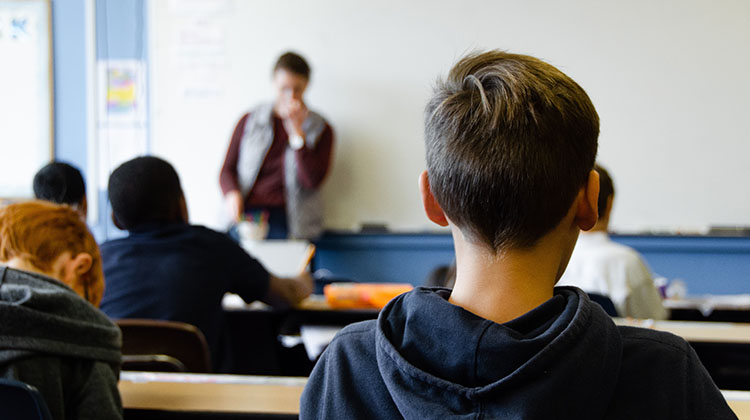Student behaviour and teacher job satisfaction

Teachers have a most important role in the success of students in their learning and it is reported that the most effective teachers are happy in their jobs. Teachers with high job satisfaction are proven to be more committed to the profession, dynamic in their practices and resilient when faced with challenges. However, it is reported that rising teacher stress levels negatively impact not only on student achievement but also on their own physical and psychological health, contributing to teacher burnout and increased attrition rates (Benevene et al., 2019).
Although some argue that certain people have a predisposition to anxiety, meaning that they would generally be more stressed than less anxious people, it is vital to consider the constantly changing features of a teachers’ average day, in particular, the emotional exhaustion of dealing with consistent behaviour issues.
The three main behaviours reported as contributing to teacher stress and burnout are lack of student motivation, negative attitudes towards work and disruptive behaviour (Ferguson et al., 2012; Skaalvik & Skaalvik, 2010). Disappointingly, such behaviours are regularly reported as the determining factor for good teachers leaving the profession. Since student behaviour is an external factor which is out of a teacher’s control, it is imperative to have some form of classroom management structure around behaviour as without it, teachers are chasing their tail so to speak, minimising teacher job satisfaction.
Arguably, schools with higher rates of behaviour infractions have higher teacher attrition rates, which can be interruptive to student outcomes and costly to schools. Therefore, such schools would benefit from implementing school-wide behaviour management procedures that reflect best-practise policies. Consistency across the school allows students to understand the overarching rules and know that all school staff members will uphold such expectations.
In the interests of students learning in a safe and supportive environment, most Queensland State Schools use the Positive Behaviour for Learning (PBL) whole-school framework which supports the explicit teaching of expected behaviours and monitoring to identify students who need more intensive support. NSW schools have implemented a similar approach called the Behaviour Code for Students. Each State, in fact, has a version of whole-school behaviour management policies to be implemented in state schools, as do private schools have their own version, so what is going so wrong? Why then is student behaviour one of the major determining factors to negatively impact teacher job satisfaction (Esprívalo Harrell et al., 2019)? Why is student misbehaviour frequently reported as the reason for leaving the profession (Esprívalo Harrell et al., 2019)?
As discussed with many a colleague, such behaviour policies are difficult to implement day in, day out, with escalating behaviours presenting challenges to teachers and schools. Some schools are employing a designated behaviour specialist to support teachers and ensure the behaviour policy is carried out effectively.
It is reported that new graduates are ill-prepared to effectively manage student behaviour, contributing to them leaving the profession early (Mason & Matas Poyatos, 2015). Professional learning is imperative to building skills in this area, with 45% of early career teachers surveyed in the Staff in Australia’s Schools (SiAS) survey reporting that they need professional development in dealing with difficult students (The Australian Council for Educational Research, 2013). A quality mentoring program within the school will allow early career teachers the opportunity to discuss problematic behaviours with more experienced teachers. Additionally, observing the classroom behaviour management practises of skilled teachers will provide practical strategies for new teachers.
Research has proven that fostering teacher and caregiver relationships is an important element for students who present with higher levels of behaviour infractions as it shows consistency across home and school (Skaalvik & Skaalvik, 2010). Additionally, acknowledgment of positive behaviours from students should not be overlooked, as it is a powerful tool to build trusting relationships between teacher and student whilst supporting a culture of behavioural expectations in the classroom as a whole.
With behaviour management being one of the biggest daily stressors for teachers, it is worth putting in the effort to build teachers’ efficacy in behaviour support. Afterall, confident teachers in this area are less stressed and have higher job satisfaction, meaning they are more motivated and devoted to the profession.
References
Australian Council for Educational Research. (2013). Staff in Australia’s schools 2010: Main report on the survey. https://docs.education.gov.au/system/files/doc/other/sias_2013_main_report.pdf
Benevene, P., De Stasio, S., Fiorilli, C., Buonomo, I., Ragni, B., Briegas, J. J. M., & Barni, D. (2019). Effect of teachers’ happiness on teachers’ health. The mediating role of happiness at work. Frontiers in Psychology, 10. https://doi.org/10.3389/fpsyg.2019.02449
Esprívalo Harrell, P., Thompson, R., & Brooks, K. (2019). Leaving Schools Behind: The Impact of School Student Body and Working Conditions on Teacher Retention and Migration [Article]. Journal of Science Teacher Education, 30(2), 144-158. https://doi.org/10.1080/1046560X.2018.1538300
Ferguson, K., Frost, L., & Hall, D. (2012). Predicting teacher anxiety, depression, and job satisfaction. Journal of Teaching and Learning, 8(1). https://doi.org/10.22329/jtl.v8i1.2896
Mason, S., & Matas Poyatos, C. (2015). Teacher attrition and retention research in Australia: Towards a new theoretical framework. Australian Journal of Teacher Education, 40(11). https://doi.org/10.14221/ajte.2015v40n11.3
Skaalvik, E. M., & Skaalvik, S. (2010). Teacher self-efficacy and teacher burnout: A study of relations. Teaching and Teacher Education, 26(4), 1059-1069. https://doi.org/10.1016/j.tate.2009.11.001
Photo by Taylor Wilcox on Unsplash